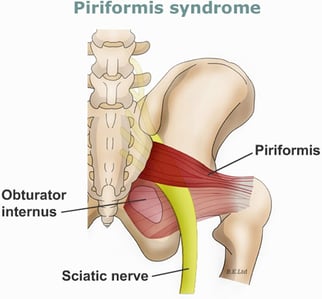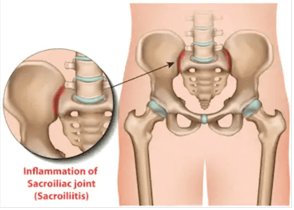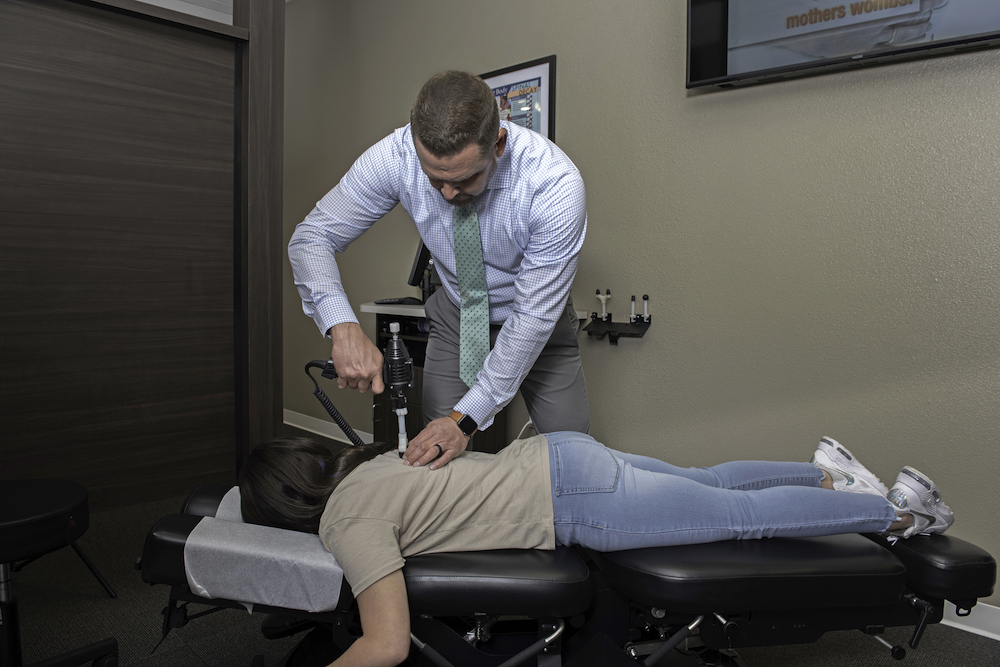5 Back Conditions that Mainly Affect Women
5 min read

Did you know there are some back conditions more likely to affect women than men? It can be really frustrating to get stopped in your tracks because of back pain. Let’s look at five common conditions that impact women and types of chiropractic treatments that can help.
1. Piriformis Syndrome
 There is a muscle deep in the buttocks called the piriformis. This band-like muscle connects from the top of the hip joint to the bottom of the butt cheek. When it becomes inflamed, it causes pain. This is referred to as piriformis syndrome. You might notice pain, numbness or tingling in your backside than runs down your leg, or up into the lower back. It might worsen when climbing stairs. While it’s not considered sciatica, it could be your sciatic nerve being irritated by the inflamed piriformis muscle. This syndrome usually occurs when there is a history of excessive use such as long-distance running, or being in the same position too long including prolonged sitting. It seems to be more common in women, but experts aren't sure why.
There is a muscle deep in the buttocks called the piriformis. This band-like muscle connects from the top of the hip joint to the bottom of the butt cheek. When it becomes inflamed, it causes pain. This is referred to as piriformis syndrome. You might notice pain, numbness or tingling in your backside than runs down your leg, or up into the lower back. It might worsen when climbing stairs. While it’s not considered sciatica, it could be your sciatic nerve being irritated by the inflamed piriformis muscle. This syndrome usually occurs when there is a history of excessive use such as long-distance running, or being in the same position too long including prolonged sitting. It seems to be more common in women, but experts aren't sure why.
Typically, this condition is diagnosed with a physical exam, although images may be taken to be sure there are not herniated or ruptured discs causing the pain. Chiropractic care for piriformis syndrome can include cold laser treatment, massage therapy and possibly even spinal adjustments.
We may also recommend stretches that help reduce pressure and lengthen the piriformis muscle along with ice, rest and heat.
2. SI Joint Pain: Sacroiliac Joint Dysfunction
 Up to 30% of lower back pain is caused by issues in the sacroiliac joint, also referred to as the SI joint. The sacroiliac joint is where the hip bones connect to the lower part of the spine. It doesn’t have a lot of movement, but rather absorbs a lot of shock.
Up to 30% of lower back pain is caused by issues in the sacroiliac joint, also referred to as the SI joint. The sacroiliac joint is where the hip bones connect to the lower part of the spine. It doesn’t have a lot of movement, but rather absorbs a lot of shock.
There are two things that can cause issues in the SI joint
- Hypermobility: Too much motion or instability can cause pain often felt in the lower back or hip, radiating to the groin area.
- Immobility: Too little movement or fixation can cause muscle tension that causes pain on one side of the low back or radiating down the back of a leg (much like sciatica pain).
Loosening or stabilizing this joint will be key to recovery and stopping lower back pain related to sacroiliac joint dysfunction. We can help identify the issue in our office.
You may benefit from an adjustment and stretching regimen to reduce muscle tension causing fixation. Rest, ice and heat might help soothe the irritated area. Braces for support and strengthening exercises may be helpful if hypermobility is the issue.
3. Spinal Osteoarthritis: Degenerative Joint Disease
Spinal osteoarthritis, also called degenerative joint disease, is more common in people who are overweight. Unfortunately, weight gain is common for women during or after menopause which helps explain why this affects more women than men.
Spinal arthritis occurs when the protective cartilage of the joints and disks breaks down. It might feel like stiffness or pain along the back or neck. In some cases, bone spurs can develop, placing extra pressure on the spinal column nerves. This might cause weakness or numbness in the limbs.
Strengthening and range-of-motion exercises can help support the joints and increase flexibility. At Village Chiropractic, we will do an evaluation of your back pain to recommend treatments that can help you regain mobility and reduce pain or tingling. Common chiropractic treatments for our spinal arthritis include:
- Spinal decompression
- Lumbar traction including gentle vibration for relaxing the muscles around the spine.
- Electrical muscle stimulation
- Massage
Hot and cold compresses can also offer pain relief between chiropractic visits without using medication.
4. Degenerative Spondylolisthesis
Three times more common in women, degenerative spondylolisthesis is another degenerative issue in the spine. While it affects women over 50, it’s much more common after age 65. As the facet joints age, they start to break down, allowing them to flex too much. When this happens, one vertebrae may slip over top of another. This usually happens in the L4-L5 vertebrae (or, sometimes L3-L4).
The symptoms often include aching in one or both legs, tired legs or lower back pain. It can be very uncomfortable when standing for a period of time or trying to walk much distance. Sitting is often comfortable but as we all know you can’t just sit around! Here are some things we may offer at Village Chiropractic to help relieve this type of back pain, spinal adjustments, lumbar traction, and cold laser therapy, and massage. Stretches can help relax the hamstring muscles can help you. Short periods of rest can also be helpful in allowing the back to heal.
5. Tailbone Pain: Coccydynia
The tailbone, called the coccyx, is the small bone at the bottom of the spine. Persistent pain in your tailbone is called coccydynia. It might feel like a bruise or severe pain, especially when standing up. Sitting will likely make this feel worse, but walking can relieve the discomfort. It’s possible that the pain is caused by a fracture, bruising or dislocation.
Women are five times more likely to develop coccydynia than men, typically because the tailbone is in a less protected position within the female's broader pelvic structure. A fall or prolonged sitting can cause this condition. It’s also pretty common to experience coccydynia during pregnancy or after childbirth. People who are overweight are three times more likely to experience this, but it can also happen if you lose weight too quickly.
Spinal adjustments and electrical muscle stimulation can all help with pain relief, we have also had great results with cold laser therapy to decrease inflammation. We can help you find exercises and stretching routines to help relieve the pain. It may take a few months to a year to allow full healing. Sleeping on your side can also help avoid unnecessary stress on the tailbone.
If you are looking for help with your back pain, our team located in The Woodlands can help. We will provide you with chiropractic care and stretches that can alleviate your back pain so you can go back to regular activity quicker. Schedule your appointment today and let’s talk about your options!




